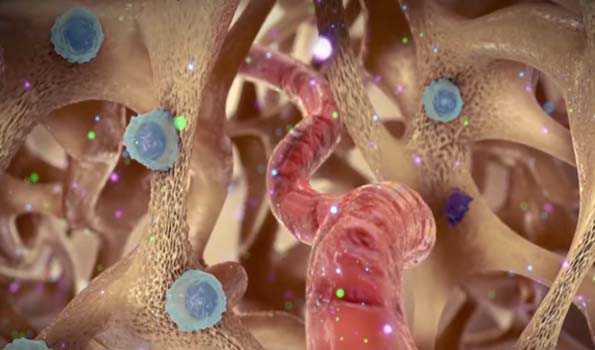A woman’s chances of getting the bone-thinning disease osteoporosis go up with age, especially after menopause, but it’s not uncommon for women to get the condition before menopause, hence it is called perimenopausal osteoporosis or bone loss,
according to Dr. C.S. Dhar, consultant, department of orthopedics and Joint replacements, CMRI, CK Birla Hospitals, here.
“As your bones become thinner with osteoporosis, they break more easily. For millions of older adults, mostly women, everyday activities like standing, walking, and bending may be enough to cause a broken bone sometimes the crack in the bones are so miniscule that it might go unnoticed in the X ray but causes pain. The drop in bone density is caused by falling levels of the female hormone estrogen. Estrogens help to maintainthe bone strength,” he said.
Hence around the time of menopauseitis advisable to take a good time to take a stock
and adopt a healthier, bone-friendly lifestyle, Dr Dhar said.
“You can have osteoporosis at any age and be aware of it for there are often no symptoms. For many women, the first sign that they have the condition is a broken bone. Osteoporosis tends to affect the specific bones that we usually actively use like the bones of the spine,
wrists, shoulders, pelvis, and hips which tends to get a fracture. These fractures can change the shape of your body, especially when they affect the spine,” he said.
Dr Dhar said the age at which someone loses bone depends on her specific risk factors.
A woman might be in her 40’s or 50’s with very strong bones while another can be in her 30’s and have early signs of osteoporosis, including fractures. If a lady of 30 has a poor bone friendly lifestyle.
“After many years, your bones become thin enough that they break from minor causes.
For example, you might trip over a crack in the sidewalk and fracture your ankle. Or lifting a bag of potting soil might cause a wrist fracture. The first fracture will usually heal. But if the bones are thin and weak, they are more likely to fracture again, which could get more painful and limit your movement as time goes on.,” he said.
Things that make you more likely to get the condition includes: A family history of
osteoporosis or fractures, A history of eating disorders, such as anorexia or bulimia, A history of other diseases, including kidney disease, celiac disease, thyroid disease, and connective tissue disorders, Your periods become irregular over the course of more than 12 months (except during pregnancy), Long-term lack of exercise or overtraining, Smoking for a long time, Taking specific drugs, such as steroids, anti- seizure meds, some chemotherapy drugs, and long-term use of the blood thinner heparin and Weighing less than 55 kg
“While you can control some risk factors, some you can’t change.While you can’t halt bone loss entirely after the menopause, there is plenty you can do to maintain your bone strength as you get older,” Dr Dhar said.
He explained, “There is a direct relationship between the lack of estrogen during menopause and the development of osteoporosis. Early menopause (before age 45) and any prolonged periods in which hormone levels are low and menstrual periods are absent or infrequent can cause loss of bone mass”.
Dr Dhar also elaborated “to reduce your risk of osteoporosis, eat a diet rich in calcium and Vitamin D and do regular exercise. These lifestyle habits are best started younger in life to get the most benefits”.
He said that it is not just Calcium which helps in getting a strong bone, but Vitamin D plays a vital role in getting a healthy bone. Vitamin D enables the body to absorb calcium, and calcium is necessary for maintaining the bone density.
Women around the time of menopause may be prescribed a vitamin D derivative and
calcium supplements. so the current recommendation is to take a balanced diet with
Vitamin D supplement (2000 international unit per day). Daily sunlight exposure
(preferably early morning and late afternoon) can also boost vitamin D production and contribute to bone health, Dr Dhar added.
(UNI)




